ISSN: 2511-7602
Journal for Art Market Studies
ISSN: 2511-7602
Journal for Art Market Studies
Alexandre Girard-Muscagorry
This article follows the path taken by a Mumuye vertical mask collected in Zing, Eastern Nigeria, which entered the collection of two Parisian dealers, Ewa and Yves Develon, during the 1980s. Unlike the vast majority of objects from Eastern Nigeria that arrived in Europe in the second half of the twentieth century, this mask happened to be precisely documented in Zing by the American art historian Arnold Rubin. In 1965 and 1970, Rubin photographed the mask several times and was able to record numerous pieces of information about its context of use and its sculptor, Lenke. Based on Rubin’s field documentation kept at the UCLA Fowler Museum, Ewa and Yves Develon’s personal archives and several interviews conducted with the owners, this detailed case study intends to reconstruct the trajectory of this object from Nigeria to France, through Cameroon. Its cultural biography provides an overview of the profound physical and symbolic metamorphoses of African artefacts following their circulation on the art market and their appropriation by Western collectors.
On 13 February 2011, the exhibition Central Nigeria Unmasked: Arts of the Benue River Valley opened to the public at the UCLA Fowler Museum.1 This groundbreaking show and its impressive catalogue summarized several decades of research carried out by leading scholars on this region of Eastern Nigeria. Conceived as a regional journey along the Benue River, Central Nigeria Unmasked not only underlined the remarkable diversity of these little-known artistic traditions, but also emphasized the continuous political, economic, and cultural interactions between the various ethnic groups. It was also a tribute to the American art historian Arnold Rubin (1937–1988), whose fieldwork in the region in the 1960s and numerous publications were crucial for the understanding of the Benue Valley. One of the highlights of the show was the installation of more than sixty impressive “vertical masks” used by several neighboring peoples – Wurkun, Bikwin, Mumuye, and Jukun – in the Middle Benue.
Yet, the location of one of the most striking recorded examples was unknown and could not be included in the show, despite the curator’s attempt to find it. The existence of the mask had been known from a field photograph taken by Arnold Rubin in the Mumuye village of Zing in 1970. However, in 2019, the mask (fig. 1) resurfaced publicly in Europe, in A Desire for Art at the Musée des Confluences (Lyon, France), an exhibition of works from the collection of two former Parisian art dealers, Ewa and Yves Develon.2 The object belongs to a special class of African artefacts that had been well documented in the field before they arrived in Western collections. Over the course of its journey from Nigeria to France, the mask not only travelled more than 5,000 km but also underwent a series of radical transformations, both physical and semantic. In attempting to reconstruct the “cultural biography” of this object, this article is intended to address the lack of specific case studies on the displacement of African artefacts during the second half of the twentieth century.
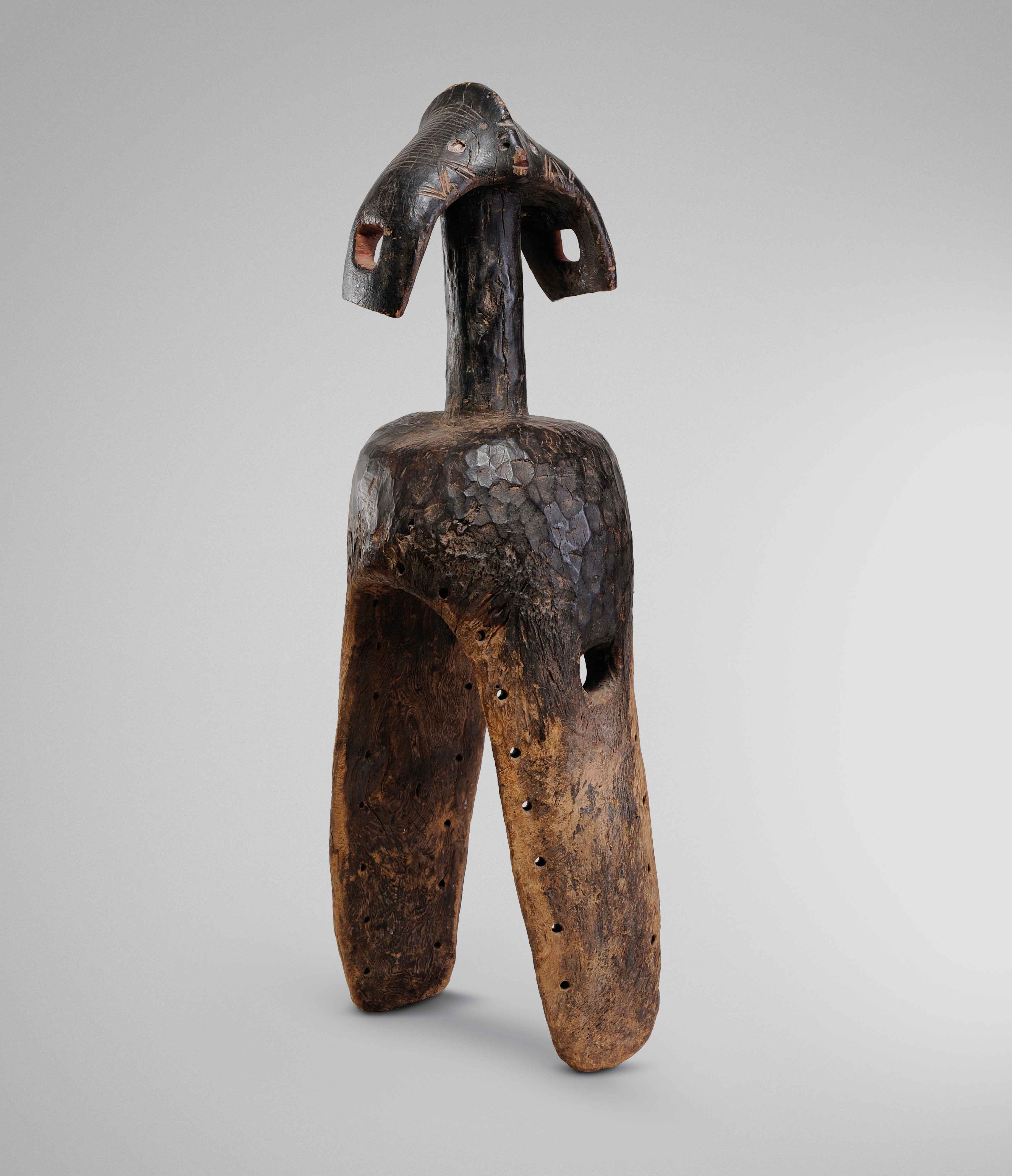
Fig. 1: Lenke, sukuru vertical mask, Nigeria, Mumuye village of Zing, mid-20th century, wood, 105 × 30 × 37 cm, Ewa and Yves Develon collection, Paris © Alain Lebas
The odyssey of this mask began in Nigeria, in the Zang hamlet of Zing, which at the time of Arnold Rubin’s fieldwork was designated as Zinna in Western literature.3 In the 1960s, ruled by a Muslim leader, this town was the center of one of the main districts of the Mumuye region – along with Pantisawa, Kwaji or Jalingo. The term “Mumuye” currently used to designate this people and the sculptures originating from this territory did not historically cover a homogeneous entity. Probably coined by their Fulani neighbors, it was used – as is often the case in sub-Saharan Africa – by the British colonial system to designate several groups showing linguistic and cultural similarities, before being appropriated by the people themselves as a badge of identity.4
As a PhD candidate, preparing his dissertation on the arts of the Jukun-speaking people,5 Arnold Rubin travelled to the Mumuye region for the first time in 1965 and ventured into Zing, as illustrated by a hand-drawn map kept in his archives which roughly locates the town. Using a comparative approach, Rubin had set out to document a similar type of mask observed in the Jukun village of Kona.6 It was during this stay in Zing, on 4 March 1965, that Rubin first encountered the mask that would later become part of the Develon collection, and he recorded this moment with a series of photographs, showing its head from three different angles (fig. 2). Illustrating his unpublished dissertation,7 they are considered the first images of vertical masks ever produced.8
Five years later, in April 1970 and February 1971, the art historian returned to the Mumuye region for a more thorough investigation of this artistic tradition. Back in Zing, on 4 April 1970, Rubin shot the most famous photograph of the mask, which has since been widely disseminated, from glossy art historical monographs to social media (fig. 3). Its precise context of production remains unknown: was this image staged or did Rubin capture a fleeting moment of preparation, just before the mask’s public appearance? Whatever the circumstances, he succeeded in producing a striking photograph that both perfectly encapsulates the mask’s supernatural dimension and elucidates how it was worn. Sometimes described as a “shoulder mask,” this type of object was in fact placed on the head of a dancer, who could see through the hole carved in the support plank. The art historian Marla Berns has suggested calling them “vertical masks” in view of their height – between 80 and 160 cm – in order to differentiate them from helmet masks.9

Fig. 2: Arnold Rubin (1937-1988), Field photograph of the sukuru mask in the Zang hamlet of Zing, Nigeria, 4 March 1965, Rubin Archive, Fowler Museum at UCLA, no. 355-6-7.
In addition to producing this iconic image, Arnold Rubin also recorded in his notebooks several pieces of information that now ground our understanding of this object. According to Rubin, based on the information he collected from the Dentiti clan in the Zang hamlet of Zing, the mask was designated by the term sukuru, the “old woman.” The large, hanging lobes, evoking the use of earplugs, are considered a distinctive female feature by Mumuye – despite the fact that this practice was common among both men and women10 – as are the pieces of sorghum inserted into the nasal septum and nostrils. The scarifications covering the face and the sagittal crest also echo Mumuye women’s body adornment. For Jan Strybol, however, who took part in the Benue Valley Expedition (1970-1972) organized by the Royal Museum for Central Africa (Tervuren, Belgium), the mask’s bird-like profile, with its narrow and projecting mouth, invites us to see it as a therianthropic figure.11 Indeed, in Zing, Strybol heard about the existence of a sukulu mask, meaning the “bush woman,” an ambiguous, liminal creature related to the wild world.12 Other interesting records by Rubin include specifications about the symbolism of colors adorning this type of mask13 and its use: during funerals, to punish thieves or to celebrate the appointment of a new chief.14 Unlike Jukun or Wurkun vertical masks, the sukuru wasn’t used in ceremonies related to the agricultural cycle. As Susan Elizabeth Gagliardi demonstrates for the vaa-bong masquerade studied by Rubin, however, the relatively small number of masks and villages the art historian studied makes it very difficult to generalize, knowing that the context of use could vary greatly according to the location or the circumstances.15
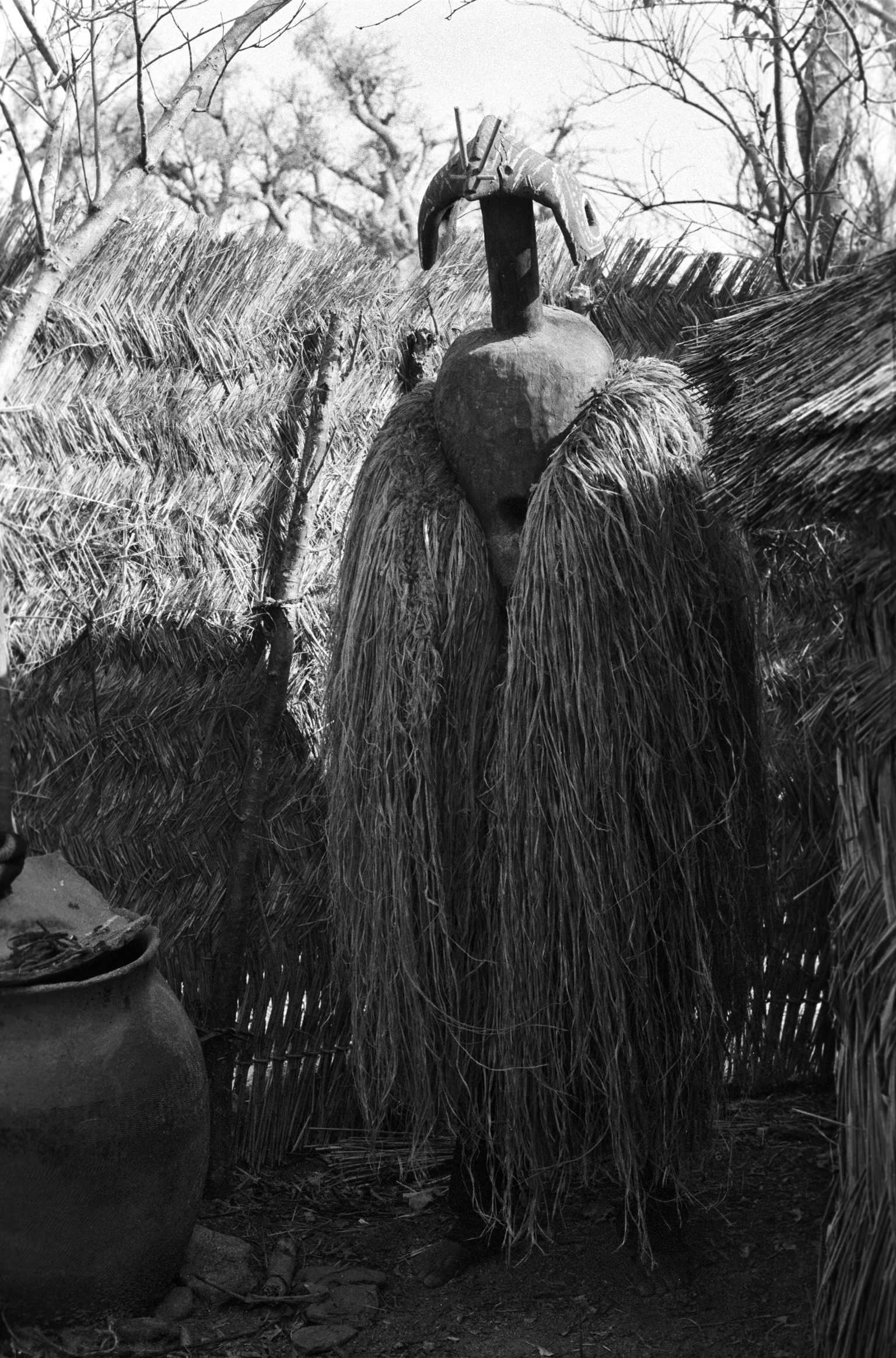
Fig. 3: Arnold Rubin (1937-1988), Field photograph of the sukuru mask in Zing, Nigeria, 4 April 1970, Rubin Archive, Fowler Museum at UCLA, slide no. II-258.
If having a field photograph of an African object now in Europe is rare, having detailed information about its maker is exceptional. And yet this mask combines these two unique characteristics, since Rubin – who recorded the name of several Mumuye artists during his missions – had the opportunity to conduct an interview with its sculptor, Lenke (fig. 4 & 5).16 Born in Zing, he learned how to carve at the age of ten over the course of a year from his elder brother, Mai Shera,17 who was trained by their father, Zuganu. Lenke became a renowned carver, who specialized in masks and was commissioned by numerous communities in the region.18 He told Rubin he had sculpted more than 150 of this kind over the last thirty years,19 along with 500 bush cow masks (vaa-bong). This extensive experience explains the great technical mastery that the mask in the Develon collection exhibits. Despite Lenke’s prolific activity, this sukuru mask is the only example attributed to him with certainty. Even if similarities can be identified with other sculptures currently in Europe or the United States,20 Richard Fardon, however, warns us not to undertake a vain quest for “masterhands” as sculptors could experiment with a great diversity of styles from one work to another.21
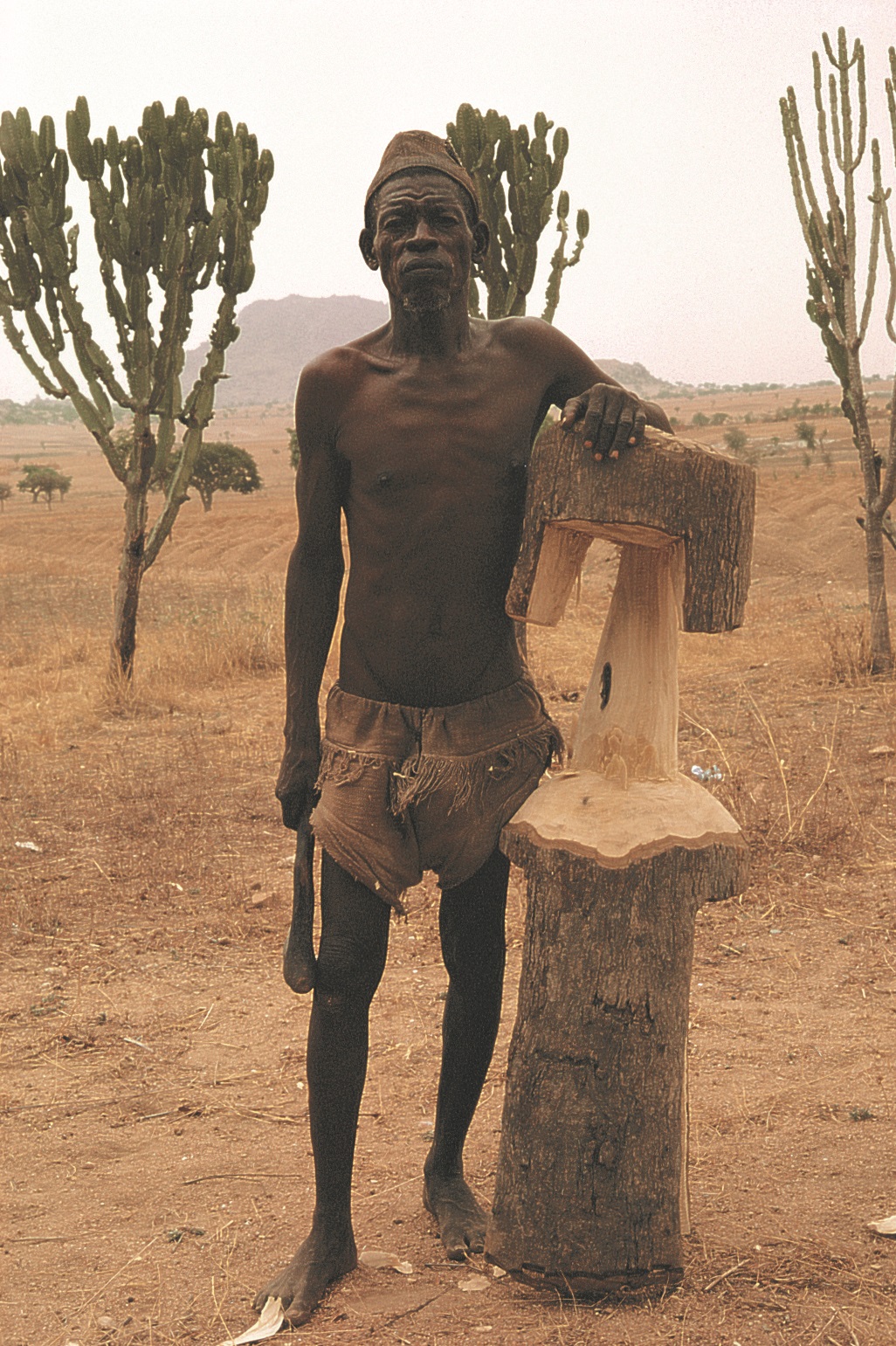
Fig. 4: Arnold Rubin (1937-1988), Portrait of Lenke, Zing, Nigeria, April 1970, Rubin Archive, Fowler Museum at UCLA, slide no. II-284.
The amount of information available about this object is unique and provides a rare picture of a Mumuye mask’s life in its original context of use. Furthermore, given the lack of investigation into this artistic tradition, Rubin’s study will continue to shape the art historical narrative of these little-known vertical masks that appeared on the art market during the second half of the twentieth century.
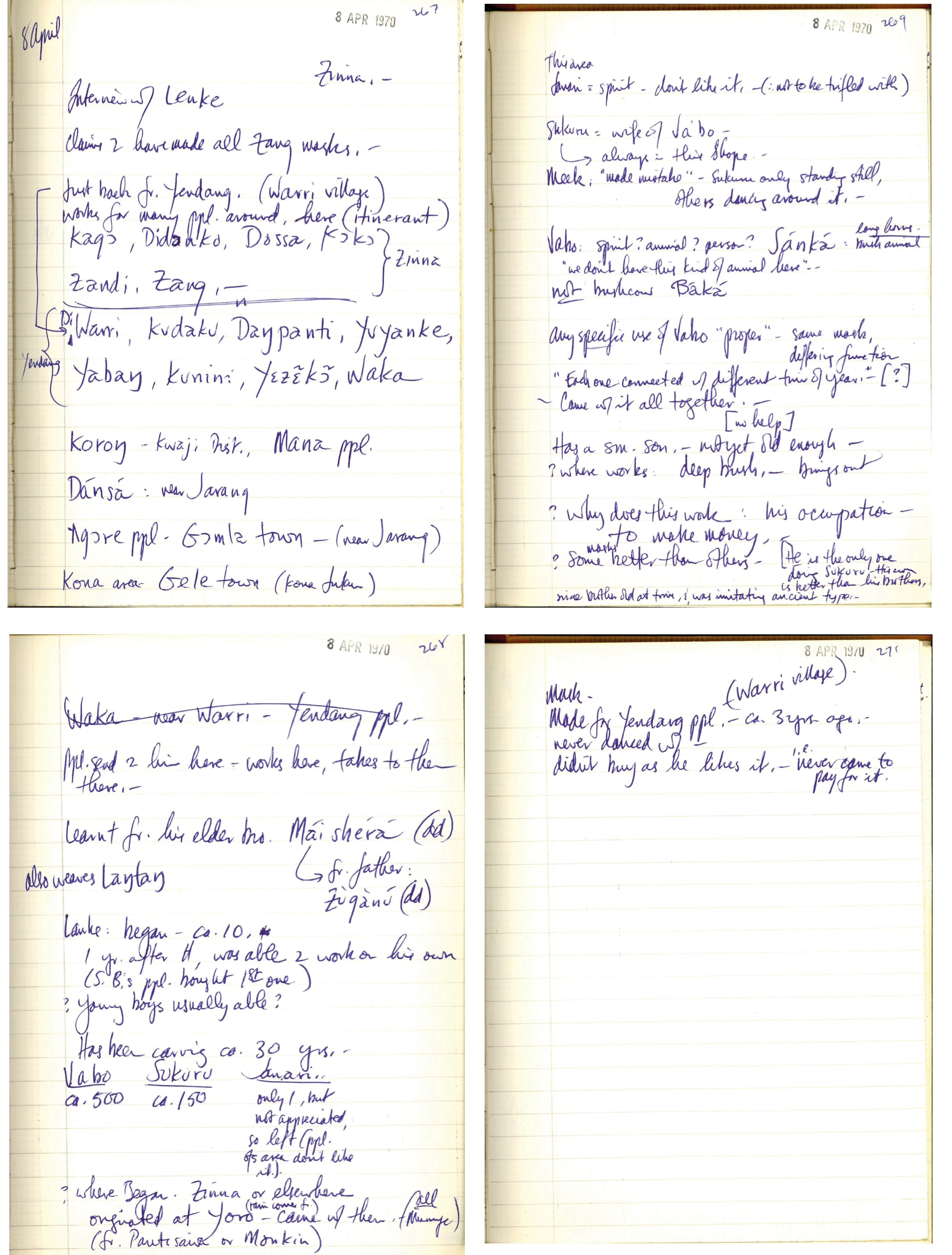
Fig. 5: Interview with Lenke in Arnold Rubin’s fieldnotes, 8 April 1970, 267-270, Rubin Archive, Fowler Museum at UCLA.
Before the 1960s, Mumuye figures were extremely rare in Western public or private collections. The oldest sculptures recorded were recently identified by Richard Fardon in the collection of the Museum of Archaeology and Anthropology in Cambridge. Collected in 1909 by H.M. Brice-Smith, this pair of figures was donated with other artefacts as works of “Mumuye tribes.” In 1921, Assistant District Officer E.S. Lilley also collected a well-known group of statues in Binyeri and donated them a year later to the British Museum. They were labelled as “Chamba” before being attributed to the Mumuye in the 1960s when a “Mumuye style” was being defined in Europe.22 But, aside from Brice-Smith and Lilley’s figures, the real “exodus”23 of Mumuye sculptures took place in a short period of time, in the aftermath of the Nigerian Civil War (1967-1970), also known as the “Biafran War.” If the departing point of the Develon mask is well-known, we can only speculate on the circumstances that led to its displacement from Zing, based on what we know of this troubled and complex period.
Since the mid-1960s, objects from Eastern Nigeria started to appear in Paris and Brussels – the two main hubs for African art in Europe – in successive waves. Mumuye figures were among the first pieces that surfaced, alongside Igbo sculptures.24 The Civil War, during which the Nigerian government violently repressed the secession of the Eastern Region, caused heavy turmoil in Igboland and Cross River, but also had consequences further north, in the Benue Valley. In a war-ravaged country, the great poverty of local communities often pushed the objects’ traditional owners to sell them. Beyond the need for cash, other factors prompted the “exodus.” The abandonment of traditions, under the influence of Islam and Christianity, as well as the emergence of new “modern” values relayed by school and urban life, were certainly instrumental in the drain of Benue artworks. Even though the Nigerian legislation already prevented the illegal export of “antiquities” – i.e. archeological findings but also ritual objects25 – the Nigerian Civil War loosened border control, making the transfer of objects to neighboring Cameroon fairly easy.
Even if several Western dealers, such as Jean-Michel Huguenin or Philippe Guimiot, ventured into Eastern Nigeria in quest for artworks during the 1960s and 1970s,26 most of the objects found their way to Cameroon through the intervention of so-called “runners.” These middlemen worked for well-established Cameroonian dealers and were in charge of locating artworks and bringing them to collecting points on both sides of the border. Acquired in Zing, the vertical mask could have been brought to the neighboring city of Jalingo, one of the main exit gates of Benue artefacts, where it was passed on to a Cameroonian “runner” who then transported it to Foumban, in the Grassfields region.27 The fact that the protagonists of this trade were Muslim facilitated the sequence of transactions. As Muslims, they could deal with these ritual objects as commodities and communicate easily across borders.
It does not come as a surprise that Foumban became the main way out for Nigerian artefacts considering that, since the end of the 1920s, the capital of the Bamum kingdom was home to a dynamic art market specializing in both “authentic” objects from the local chiefdoms and locally-produced copies of famous African archetypes. Under the French colonial administration, the abandonment of the strict rules which governed the access to prestige goods led to the emergence of workshops producing objects for new patrons – expatriates or tourists – and the apparition of numerous dealers gathered around the palace or along the Rue des Artisans.28 The European gallerists and collectors active during this period remember with emotion the arrival of Nigerian objects in what was considered a new “El Dorado” for African art aficionados.29 In the second half of the 1960s, several French and Belgian travellers made the trip to Foumban in order to acquire these spectacular sculptures.30 Yves Develon was part of the second wave of collectors to visit the city. From 1973 onwards, as a social management consultant advising French companies in Africa, he visited Cameroon frequently and took advantage of his weekends to go to the Grassfields and buy artworks, nurturing a nascent passion for African art.
In the light of this complex historical context, determining precisely the reasons or the conditions that led to the removal of the mask from Zing to Foumban is a difficult exercise. Were Arnold Rubin’s field photographs used as a kind of “treasure map” by runners, as was the case for a group of Jukun sculptures he photographed in Gwana in 1966 and reproduced in his dissertation?31 Was it transparently ceded by Zing inhabitants whose relationships to their customary practices had changed or was it a forced transaction resulting from the political and economic turmoil? As Hélène Joubert sums it up: “[...] attributing motives to those who decided to abandon elements of their patrimony, whether personal or communal, is risky. Historical, social, political, and cultural, as well as personal, factors have to be taken into account, and the evidence that would allow such reconstruction at this remove in time is largely wanting.”32
Though Yves Develon regularly stayed in Cameroon, he did not buy the Mumuye mask in Foumban but in Paris, during the 1980s. According to him, the object had been brought to France by a Cameroonian dealer, known as “Idriss le Jeune,” with whom he occasionally worked. The remarkable documentary In and Out of Africa, which retraces the journey of the art dealer Gabai Barre from Ivory Coast to Long Island,33 perfectly shows that West African antiquaires frequently travelled to the United States, France or Belgium to meet their Western colleagues in the hope to sell their most interesting pieces.
However, the journey to France did not leave the mask unscathed. Before entering the Develons’ collection, it had already lost its bulky fiber costume, its painted decoration, as well as the sorghum straws that adorned its nose. If the process of physical transformation of African artefacts is generally attributed to Western collectors,34 Christopher Steiner has demonstrated, in the context of the Ivorian market, how African dealers do not hesitate either to modify their statues, removing for example a loincloth or faking a patina so they can meet their clients’ taste for “pure” sculptures and facilitate their metamorphosis into works of art.35
At the turn of the 1970s, the apparition of the first objects from Eastern Nigeria on the art market caused a great deal of emotion among collectors who were strongly impressed by their thick crusted patina, their vivid polychromy and, above all, their spectacular and harsh construction. Yves Develon, as a collector and – from 1980 – a dealer, was an active promoter of this new aesthetic, alongside Alain Dufour, Claudie and Alain Lebas or Max Itzikovitz, in contrast to the consensual Fang or Baule statues highly valued by the art market: “The audacity of so-called ‘good taste’ [...] too often consists in favoring natural forms, while sidestepping and rejecting unknown ones, as if to show that one cannot allow the ‘Picasso train’ to pass without latching onto it.”36 However, the collector readily acknowledges he did not immediately understand the Mumuye statuary when the first examples arrived in Europe. In 2012, Yves Develon described his mixed feelings as follows: “There are some Mumuye statues, like those of Jacques Kerchache, that I nickname the ‘injured birds’ with their long flapping arms, a serene strength; they try unsuccessfully to take off. These statues are full of poetry; as if the clumsy execution gave impetus to the objects’ mystical potentials. And others look like food mills, very geometric and sometimes very stiff.”37
Indeed, while a great variety of Nigerian artefacts passed through their hands, Mumuye objects were rare both in their galleries and in their personal collection. In view of the attraction aroused by Mumuye works in Paris, the discovery of the mask was certainly perceived as a unique opportunity to fill a gap. But, above all, its enigmatic shape, halfway between mask and freestanding sculpture, was likely to meet the Develons’ taste for uncanny objects.
Their interest in this mask also increased when they found, shortly after its acquisition, Arnold Rubin’s 1965 field photograph reproduced in William Fagg’s Masques d’Afrique (1980).38 This book was certainly the first to publish the image and to attribute this type of vertical mask – previously labeled as Waja39 – to the Mumuye, based on the information provided by Rubin. This discovery triggered a desire to know more about this poorly documented object, as the couple’s personal archives illustrate. Over the years, Ewa Develon regularly compiled academic publications, sales catalogues or galleries’ advertisements showing similar examples, all carefully organized and captioned in a specific folder, as she did with other pieces of their collection. In a context where artworks without any equivalent can easily be considered as fakes,40 this practice contributed to certify the mask’s authenticity. But it also demonstrates their will to understand the object in its original context of use. Far from rejecting any kind of academic knowledge which, according to some collectors, “depoetizes” or “objectifies the sculpture,”41 the Develons have a more nuanced position, summarized in an interview given by Yves Develon in 2012: “There is no aesthetic without the ethnographic contribution which comprises, more or less, the religious aspect. When you look at an object, you can’t find it beautiful by doing abstraction of what the sculptor’s code has put in it, his personal dimension, hence related to ethnography.”42
As many dealers do, Ewa and Yves Develon kept their most cherished pieces in their private collection, sometimes exhibiting them during art fairs but without thinking of selling them. The vertical mask became a highlight of their personal collection where its transformation as a “work of art,” already initiated by the removal of the fiber costume, took another dimension. The first step was the adjunction of an elegant mount, designed by a renowned French mount maker, Eugène Betra, with whom the collectors regularly worked in the 1980s and 1990s. The art historian Manuel Valentin clearly demonstrated the essential role played by this accessory in the transformation of African artefacts into sculptures in isolating them from their original context and offering visual coherence for their appropriation by the Western eye.43 While undergoing this aesthetic metamorphosis, the mask was also photographed soon after its arrival in Paris (fig. 6). Playing with the light passing through its pierced earlobe, Ewa and Yves Develon intended to reproduce the dramatic beam of light irradiating the mask in Arnold Rubin’s 1970 photograph to verify that it was indeed the same object. But the stark contrast between the sculpture and the backdrop resulted in highlighting its elegantly cut silhouette. In 2012, in preparation for an exhibition in Quebec City, the mask was also photographed in a three-quarter view, against a high-contrast grey backdrop characteristic of museum and auction catalogues (fig. 1).44
Except for two exhibitions,45 the mask did not leave Ewa and Yves’s Develon successive Parisian apartments. In their current residence, the sculpture is displayed prominently in their living room, among other artworks from Nigeria and contemporary design furniture (fig. 7). Although they have more than 300 African objects, the couple rejects the compulsive accumulation that characterizes some collectors’ homes in favor of an elegant and airy display, drawing on the similarities and contrasts between sculptures. Exhibited on a white pedestal, similar to those that adorned their Parisian gallery, the sukuru mask seems to watch over the stairs, in dialogue with another spectacular vertical mask attributed to the Wurkun. In this “border space” (espace frontière) where the Self is produced with the Other,46 the mask completes its metamorphosis into a work of art and serves as a potent signal for Ewa and Yves Develon’s taste for “superb, stunning, and hitherto unseen” objects.47
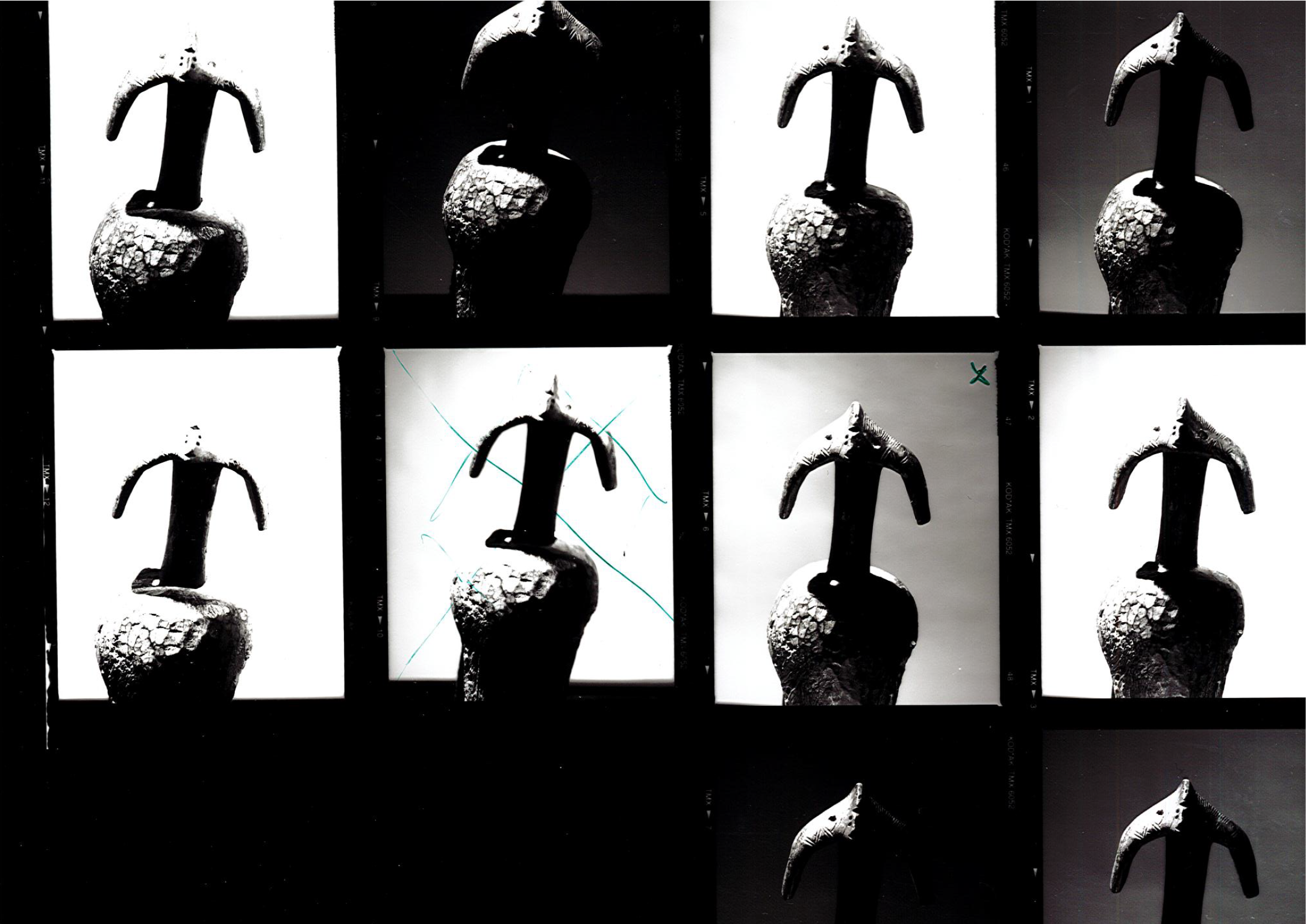
Fig. 6: Negatives from a photo session of the sukuru mask, n.d., Ewa and Yves Develon personal archives © Gregor Podgorski
The “social life” of this Mumuye mask is both representative and specific with regard to the circulation of Nigerian artefacts during the second half of the twentieth century. On the one hand, the same itinerary from the Benue Valley Region to Paris was taken by hundreds of statues and masks which, from the 1960s onwards, entered the African and European art market. At each step of the journey, their status changed from ritual objects to commodities or artworks, often leading to important physical transformations. On the other hand, this specific example is exceptional by the depth of the documentation available to understand, from within, the mechanisms of its displacement. Arnold Rubin’s precious data collected during his fieldwork in the 1960s enables us to get a glimpse of the mask’s context of production and use in Zing. But it also implicitly reveals the amount of information lost for the numerous objects that left Nigeria in the same opaque circumstances and the difficulty to shed light on their exact provenance.
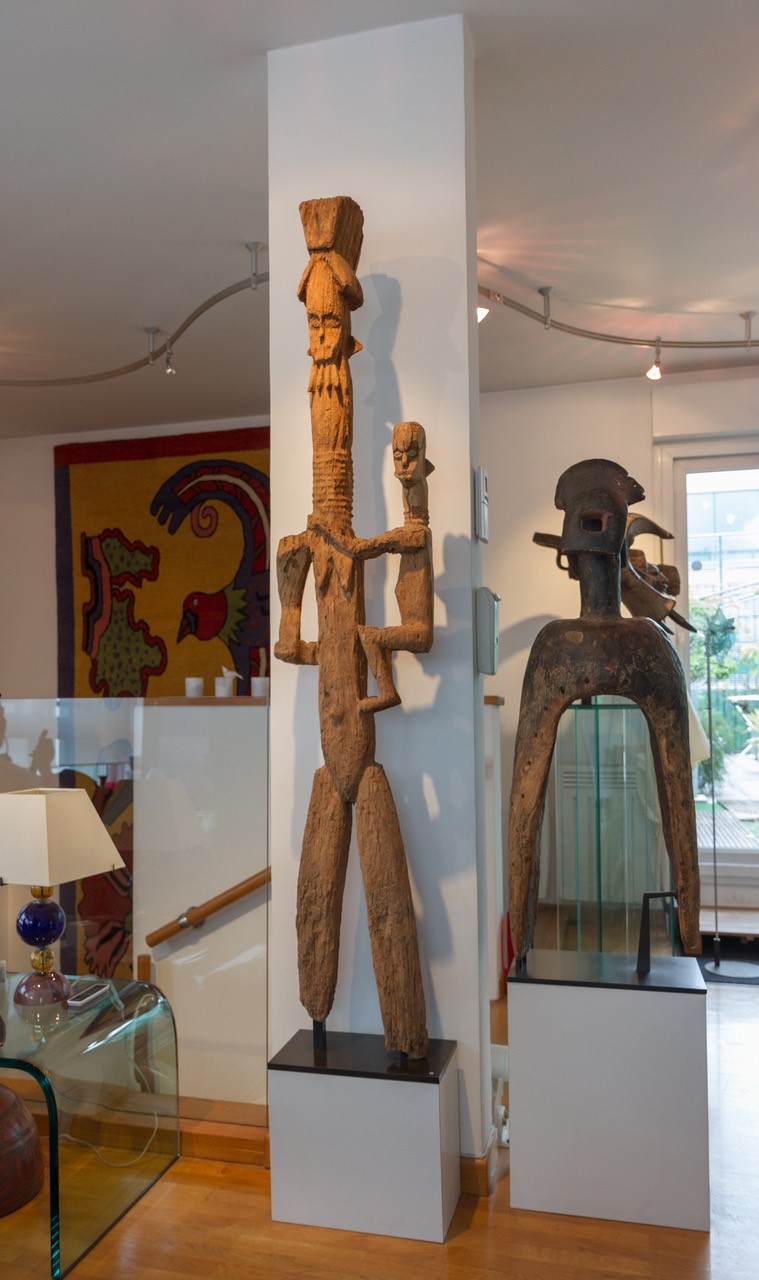
Fig. 7: View of Ewa and Yves Develon’s Parisian apartment, 2018 © Ewa Develon
The final stop of the mask leads us to the Musée des Confluences in Lyon. In 2018, Ewa and Yves Develon decided to give forty African objects from their collection to this newly opened institution. This first step was a preamble to what will ultimately become the donation of the entire collection, including the Mumuye mask. To celebrate this exceptional acquisition, the museum organized a small exhibition, entitled Désir d’art, aiming at presenting the spirit of the collection. Drawing on several interviews conducted with the Develons and the growing literature surrounding collection practices, the curators’ ambition was to analyze the amateur’s eye, the aesthetic experience lived by collectors of African art, as well as the multiple ways in which they appropriate these objects and vest them with their emotions and their imagination. The show was also an opportunity to introduce the visitors to the history of the market for Eastern Nigerian arts.
Conceived as an evocation of Ewa and Yves Develon’s apartment, the exhibition design gave a special place to the sukuru mask and intended to suggest its complex itinerary (fig. 8). Placed on a parquet floor within a luxurious glass case evoking its transformation into an artwork, the mask stood out against a large print of Arnold Rubin’s 1970 photograph. This simple display invited the visitor to reflect upon the gap between here and there, i.e. the successive steps and transformations undergone by the object all along its journey from Nigeria to France.
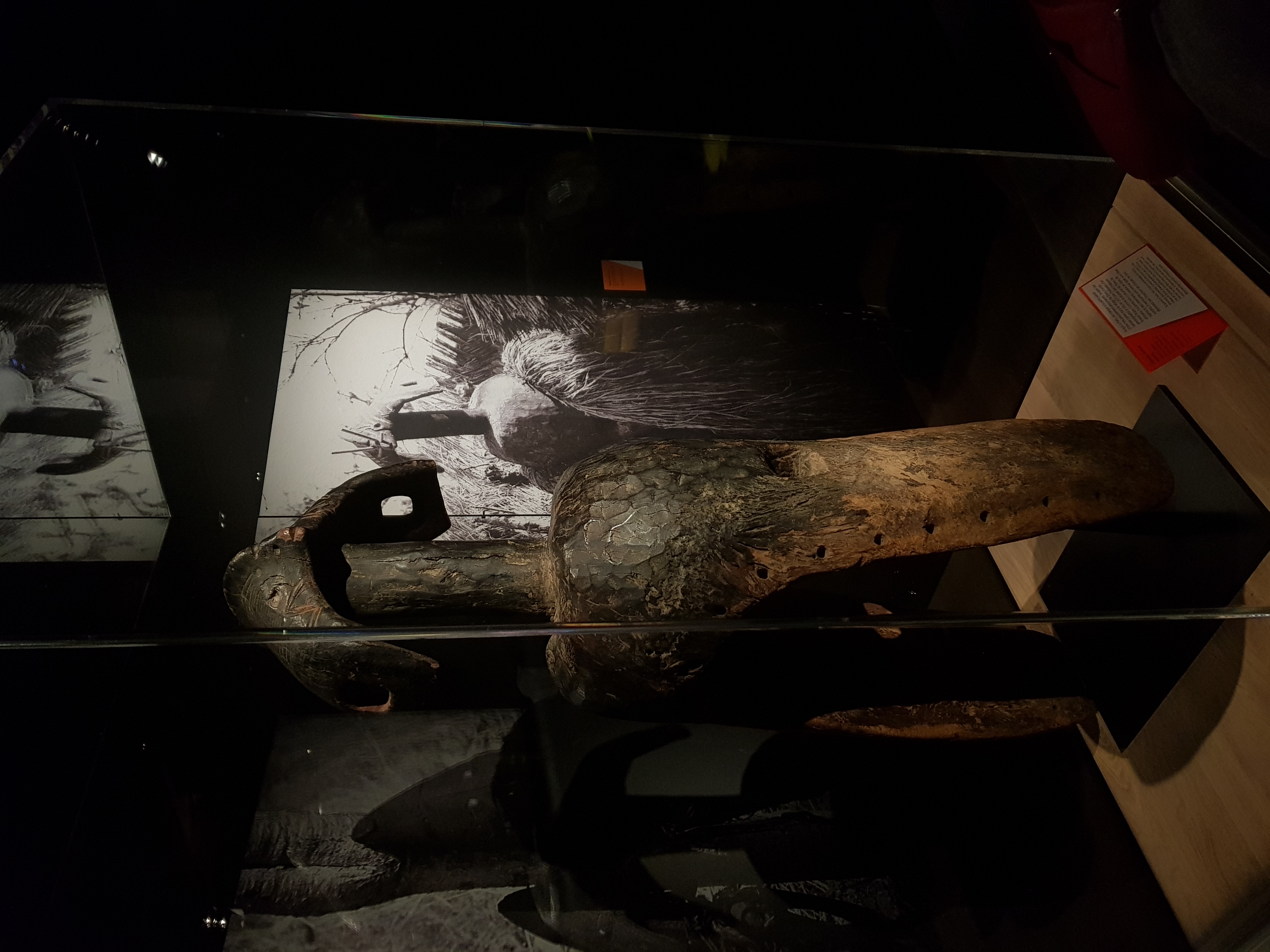
Fig. 8: The sukuru mask in the exhibition Désir d’art: la collection africaine Ewa et Yves Develon, February 2019 © Alexandre Girard-Muscagorry
Alexandre Girard-Muscagorry is a Curator at the Musée de la musique (Cité de la musique – Philharmonie de Paris). In 2018, as a trainee museum curator, he participated in the organization of the exhibition Désir d’art: la collection africaine Ewa et Yves Develon at the Musée des Confluences, Lyon.
This article would not have been possible without the help of several people. First of all, I would like to express my deepest gratitude and sympathy to Ewa and Yves Develon who consented to this project and supported me in the publication of this paper. Gassia Armenian, Curatorial and Research Associate at the Fowler Museum, Los Angeles, was kind enough to send me many crucial documents kept in the Rubin Archive. I would also like to thank Marie Perrier, Curator for African and Oceanic art at the Musée des Confluences, Lyon, who gave me the opportunity to work with her on the Develon Collection and the exhibition Désir d’art (2018). Thank you to Allia Benner, Thomas Lequeu, and Amélie Roussillon who proofread this paper as well as to the anonymous reviewer for her/his pertinent remarks.
1 The show, co-curated by Marla C. Berns, Richard Fardon, Sidney Kasfir, and Hélène Joubert, was also presented at the Musée du quai Branly, Paris, from 12 November 2012 to 27 January 2013 under the title Nigeria. Arts de la vallée de la Bénoué.
2 For more information about the exhibition, see: Alexandre Girard-Muscagorry, Marie Perrier and Carole Millon, A Desire for Art: The Ewa and Yves Develon Collection at the Musée des Confluences, in Tribal Art Magazine, 91 (2019), 69-73.
3 According to Mette Bovin, who carried out research in the region in 1964, Zing better approximates the Mumuye village name, which is supposed to mean “lion,” i.e. “a person who fears nothing.” Richard Fardon, The Quick and the Dead: Versatile Wooden Figures from the Middle Benue, in Marla C. Berns, Richard Fardon and Sidney Littlefield Kasfir, eds., Central Nigeria Unmasked. Arts of the Benue River Valley (Los Angeles: Fowler Museum at UCLA, 2011), 231-283.
4 On the invention of a Mumuye identity, see: Richard Fardon, The Quick and the Dead: Versatile Wooden Figures from the Middle Benue, 247-248; Frank Herreman, Mumuye: une brève ethnographie, in Frank Herreman and Constantijn Petridis, Mumuye. Sculptures du Nigeria. La figure humaine réinventée (Milan: 5 Continents, 2016), 15.
5 Arnold Rubin, The Arts of the Jukun-Speaking Peoples of Northern Nigeria (PhD dissertation, Indiana University, 1969).
6 Rubin suggested in his PhD dissertation that the Jukun adopted the use of vertical masks from their Mumuye neighbors. Rubin, The Arts of the Jukun-Speaking Peoples, 97.
7 Rubin, pl. 174-176.
8 The first examples of Mumuye and Jukun masks to be officially published appeared in Elsy Leuzinger’s Afrikanische Kunstwerke: Kulturen am Niger (1971) where they were misattributed to the Waja people. Marla C. Berns, Enigmatic Embodiments: Vertical Masks in Cross-Cultural Perspective, in Marla C. Berns, Richard Fardon and Sidney Littlefield Kasfir, eds., Central Nigeria Unmasked. Arts of the Benue River Valley (Los Angeles: Fowler Museum at UCLA, 2011), 437.
9 Marla C. Berns, Enigmatic Embodiments, 437.
10 Richard Fardon, The Quick and the Dead, 267.
11 Jan Strybol, L’art et le sacré en pays mumuye (Oostkamp: Stichting Kunstboek, 2018), 64.
12 Jan Strybol, L’art et le sacré, 64.
13 White evokes happiness, red is for beautification and black is “to show people that this is to get water for them” (referring to the mask’s ability to make the rain fall). Rubin fieldnotes, 4 March 1965, 86.
14 Rubin fieldnotes, 4 April 1970, 258. Rubin Archive, Fowler Museum at UCLA, Los Angeles.
15 Susan Elizabeth Gagliardi, Mining the Rubin Archive: Mid-Twentieth-Century Documentation of Two Mumuye Masquerades, in Marla C. Berns, Richard Fardon and Sidney Littlefield Kasfir, eds., Central Nigeria Unmasked. Arts of the Benue River Valley (Los Angeles: Fowler Museum at UCLA, 2011), 354-363.
16 See his fieldnotes, 8 April 1970, Rubin Archive, Fowler Museum at UCLA, Los Angeles. Rubin also used this interview as a case study in an article about the status of artist in Northeastern Nigeria. Arnold Rubin, Artists and Workshops in Northeastern Nigeria, in Christopher D. Roy, ed., Iowa Studies in African Art: The Stanley Conference at the University of Iowa, vol. 2 (The University of Iowa, 1987), 7-22.
17 In the Didenko hamlet of Zing, Arnold Rubin also photographed a Mumuye vertical mask carved by Mai Shera. See neg. no. 2613, Rubin Archive, Fowler Museum at UCLA, Los Angeles.
18 Rubin reports that Lenke only sculpted one statue but, as it was not appreciated, he decided to stop and to focus his activity exclusively on masks. Rubin fieldnotes, 8 April 1970, Rubin Archive, Fowler Museum at UCLA, Los Angeles
19 Unlike the alleged antiquity of Mumuye sculptures circulating in Europe, this information allows us to date the carving of the mask after 1940 and, most likely, during the 1960s. About the difficulty to date Mumuye figures, see Richard Fardon, The Quick and the Dead, 258.
20 See, for example, the sukuru mask kept at the Brooklyn Museum (inv. 2000.72.93). The shape of the front plank and the elegant curve of the earlobes are similar to the example in the Develon collection, although the mask looks stiffer.
21 Richard Fardon, The Quick and the Dead, 251-252.
22 On the changing labelling of these statues and, more widely, the issues raised by “artefactual ethnicity” see Richard Fardon, Negative Spaces of Mumuye Figure Sculpture – Style and Ethnicity, in Afriques. Débats, méthodes et terrains d’histoire, 10 (2019).
23 Marla C. Berns and Richard Fardon, Introduction. Central Nigeria Unmasked, in Marla C. Berns, Richard Fardon and Sidney Littlefield Kasfir, eds., Central Nigeria Unmasked. Arts of the Benue River Valley (Los Angeles: Fowler Museum at UCLA, 2011), 29.
24 Hélène Joubert, Epilogue. Making the Market for Benue Arts. Notes on the French Connection, in Marla C. Berns, Richard Fardon and Sidney Littlefield Kasfir, eds., Central Nigeria Unmasked. Arts of the Benue River Valley (Los Angeles: Fowler Museum at UCLA, 2011), 561-567.
25 See the National Commission for Museums and Monuments Act, 1990, which derives from previous legal instruments that came into effect in the 1950s and 1970s. Apart from the objects of archaeological interests, “antiquity” means “any work of art or craft work, including any statue; model, clay figure, figure cast or rust metal, carving, house post, door, ancestral figure, religious mask, staff, drum, bolt, ornament, utensil, weapon, armor, or craft work is of indigenous origin and was made or fashioned before the year 1918; or is of historical, artistic or scientific interest and is or has been used at any time in the performance and for purposes of any traditional ceremony” (art. 32). Unlike numerous African states, Nigeria also ratified the UNESCO 1970 Convention on the Means of Prohibiting and Preventing the Illicit Import, Export and Transfer of Ownership of Cultural Property very early, by 1972.
26 Hélène Joubert, Epilogue. Making the Market for Benue Arts. Notes on the French Connection, 563-566.
27 Ibid.
28 On the history of the art market in Foumban, see Silvia Forni, Canonical Inventions and Market Knowledge in the Grassfields of Cameroon, in Christopher B. Steiner and Silvia Forni, eds., Africa in the Market. Twentieth-Century Art from the Amrad African Art Collection (Toronto: Royal Ontario Museum, 2015), 119-147; Jonathan Fine, Selling Authenticity in the Bamum Kingdom in 1929-1930, in African Arts, 49/2 (2016), 54-67.
29 Alain Lebas, ed., Arts du Nigeria dans les collections privées françaises (Milan: 5 Continents, 2012).
30 Among them were Jean-Michel Huguenin, Édouard Klejman, Max Itzikovitz, Jacques Kerchache. Some of them, like Philippe Guimiot or Pierre Dartevelle even settled for a while in Foumban. Hélène Joubert, Epilogue. Making the Market for Benue Arts. Notes on the French Connection.
31 Marla C. Berns and Richard Fardon, Introduction. Central Nigeria Unmasked, 32.
32 Hélène Joubert, Epilogue. Making the Market, 567.
33 Ilisa Barbash and Lucien Taylor, In and Out of Africa, University of Southern California 1993, 59 min. This documentary is based on Christopher Steiner’s seminal research. See Christopher B. Steiner, African Art in a Suitcase (Cambridge: Cambridge University Press, 1994).
34 Manuel Valentin, Transformation et histoire pluriculturelle d’un patrimoine. L’exemple des collections africaines en France, in Julien Bondaz, Florence Graezer Bideau, Cyril Isnart and Anais Leblon, eds., Les vocabulaires locaux du “patrimoine”. Traductions, négociations et transformations (Zurich, Berlin, Münster: LIT Verlag, 2014), 69-85.
35 Christopher B. Steiner, African Art in a Suitcase.
36 Yves Develon, Préface, in Jean Vivier, ed., Une passion pour l’art africain. Collection Marie-France et Jean Vivier (Meudon: J. Cuénot, 2005), 7.
37 “Il y a les statues mumuye comme celles de Jacques Kerchache, que j’appelle les ‘oiseaux blessés’ avec leurs grands bras qui pendouillent, une force posée ; ils essaient de décoller, mais n’arrivent pas à prendre leur envol. Ces statues sont chargées de poésie, comme si la maladresse de l’exécution apportait de l’élan au potentiel mystique des objets. Et d’autres qui sont comme des moulins à légumes, très géométriques et parfois très roides.” Entretien avec Yves Develon, in Alain Lebas, ed., Arts du Nigeria dans les collections privées françaises, 39 (author’s translation).
38 William Fagg, Masques d’Afrique (Paris: F. Nathan L.E.P., 1980), 102.
39 This attribution, given by the African dealers, is surprising as the Waja of the Gongola Valley are known for producing figurative ceramic vessels but no wood sculptures.
40 Brigitte Derlon and Monique Jeudy-Ballini, L’authenticité rêvée de l’art primitif, in Les Cahiers du Musée des Confluences, 8 (2011), 87-94. The authors reveal that several collectors got rid of previously unseen or atypical sculptures and realized their mistake only after discovering a new publication or a photograph.
41 Brigitte Derlon and Monique Jeudy-Ballini, La passion de l’art primitif, 98.
42 Interview with Yves Develon for the exhibition Arts du Nigeria dans les collections privées françaises (Musée de la Civilisation, Quebec City, 24 October 2012 – 12 April 2013), URL: https://www.youtube.com/watch?v=29dLDRFAPa0&t=526s (author’s translation).
43 Manuel Valentin, Transformation et histoire pluriculturelle d’un patrimoine. L’exemple des collections africaines en France, in Julien Bondaz, Florence Graezer Bideau, Cyril Isnart and Anais Leblon (eds.), Les vocabulaires locaux du “patrimoine”. Traductions, négociations et transformations (Zurich, Berlin, Münster: LIT Verlag, 2014), 77-78.
44 Manuel Valentin, Autour de la couleur: brillance et luminosité dans la statuaire africaine, in Manuel Gutierrez, Mathilde Buratti, Manuel Valentin and Michèle Ballinger (eds.), La couleur dans les arts d’Afrique. De la Préhistoire à nos jours, (Paris: Éditions des archives contemporaines, 2016), 50.
45 Arte africano (Centro de exposiciones y congresos de Ibercaja, 4 April – 24 June 2000) and Arts du Nigeria dans les collections privées françaises (Musée de la Civilisation, Quebec City, 24 October 2012 – 12 April 2013).
46 Sabine du Crest, ed., Si loin si proche. Objets d’ailleurs dans les intérieurs européens (Rome: Gangemi Editore spa, 2015), 9.
47 This expression, used by Yves Develon to describe a Yoruba mask that was part of their collection, perfectly epitomizes his aesthetic ambition. Yves Develon, “Descriptif d’un masque de l’exposition du 19 octobre 1993”, n.d., Ewa and Yves Develon personal archives.